Thanks to a lucky find at Lolita’s Classics, I recently became the proud owner of The Mad Doctor. Intrigued by its title and reputation, I finally sat down to watch it, and let me tell you, it was quite an experience. “Strange” doesn’t even begin to cover it.
Imagine this: it’s 1940s Hollywood. A director, perhaps a little unhinged, decides to fuse a run-of-the-mill B-movie thriller with a European arthouse film exploring complex psychological themes. Throw in a subtly coded, yet undeniable, gay relationship at the heart of it all, and somehow, against all odds, the studio greenlights this cinematic Frankenstein. The result? Something remarkably close to THE MAD DOCTOR.
This isn’t just one movie; it feels like two distinct films awkwardly stitched together. On one side, you have your standard 40s thriller fare…
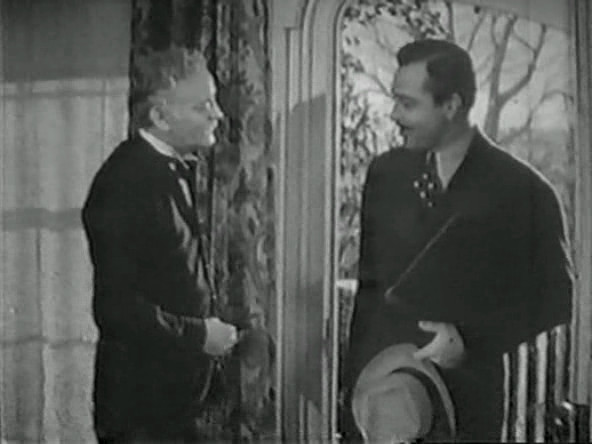
Image depicting John Howard as a bland, heroic doctor, engaging in a tedious conversation, highlighting the stereotypical thriller aspects of “The Mad Doctor” movie.
…and then, jarringly juxtaposed, you have a surprisingly forward-thinking psychological study that dares to tiptoe around taboo subjects.
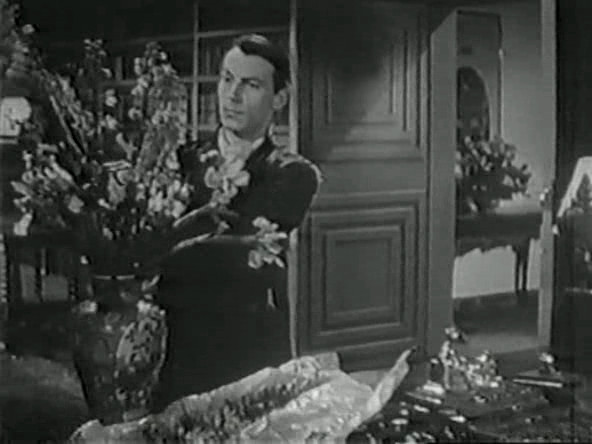
Image showcasing Martin Kosleck, in a flamboyant pose, arranging flowers, subtly hinting at the groundbreaking, yet coded, homosexual undertones within “The Mad Doctor”.
John Howard and much of the cast seem trapped in the former, navigating predictable plot points and delivering rather wooden performances. However, Basil Rathbone and Martin Kosleck inhabit the latter with gusto, embracing the nuances of their characters and pushing the boundaries of what was acceptable on screen at the time. Poor Ellen Drew is unfortunately caught in the middle, tasked with bridging these two disparate worlds. She plays a woman battling depression, whose emotional arc swings wildly from suicidal despair to sudden joy after a trip to Coney Island and an ice cream cone, only to relapse into gloom to conveniently facilitate Rathbone’s “Mad Doctor” diagnosis. It’s a performance that struggles to find consistency in the chaotic narrative.
Adding to the film’s quirky nature is a newsroom office boy who seems to have wandered in from a screwball comedy like The Front Page…
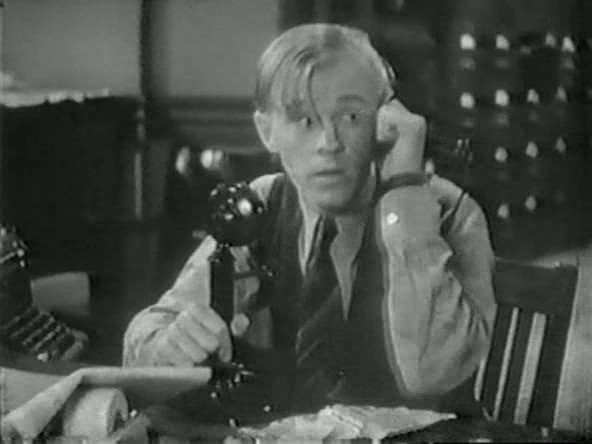
Image of a young, energetic office boy character in “The Mad Doctor”, embodying the fast-talking, comedic style reminiscent of classic films like “The Front Page”.
…and a genial country doctor archetype seemingly lifted straight from a Frank Capra film.
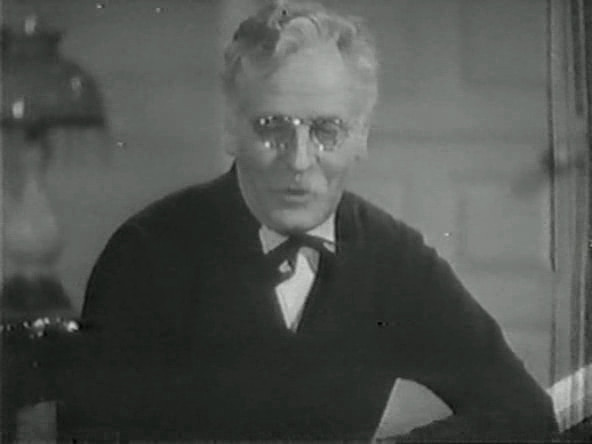
Image depicting a kindly, older doctor figure in “The Mad Doctor”, radiating warmth and trustworthiness, characteristic of the wholesome, small-town doctors often seen in Capra-esque movies.
Then there’s an extended, almost excruciating, taxi chase sequence. Characters endlessly hop in and out of cabs, fruitlessly pursuing each other in a scene that drags on and on. For reasons only director Tim Whelan might know, Rathbone is made to carry his hat, cane, and gloves throughout this tedious chase, inadvertently creating perhaps the most stylish, if not the most thrilling, pursuit in cinematic history. If memory serves, the cliché doctor may even succumb to boredom and expire somewhere in the middle of this sequence.

Image from “The Mad Doctor” capturing the prolonged and somewhat absurd taxi chase scene, emphasizing the film’s pacing issues and Rathbone’s character’s unwavering formality even in action.
But despite these numerous shortcomings, we can forgive The Mad Doctor a great deal, primarily because this peculiar, often frustrating, and rambling film had the audacity – in 1941 – to subtly weave a homosexual relationship into the very fabric of its narrative. This wasn’t some minor subplot; it’s central to the motivation of the “mad doctor” character and drives significant plot developments. While neither character explicitly declares “We are lovers,” and there are no kisses or bedroom scenes, the subtext is so pronounced that only someone completely oblivious to the existence of homosexuality could miss it.
Early in the film, with his latest wife recently deceased, Rathbone’s Dr. Sebastian talks to Kosleck’s Maurice, his live-in “roommate,” about the “cave of romance” he feels trapped in with women. He practically shudders as he describes witnessing the “love light” in his wife’s eyes.
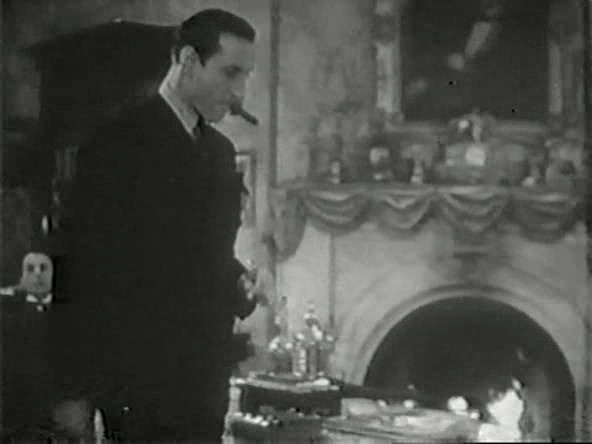
Image from “The Mad Doctor” featuring Basil Rathbone’s character with a cigar, engaged in a loaded conversation with Martin Kosleck, visually emphasizing the film’s subtle yet suggestive portrayal of a homosexual relationship.
It’s made abundantly clear that he finds heterosexual intimacy repulsive. To further emphasize this point, he lights a cigar—a blatant phallic symbol—and reclines on the sofa, luxuriating in its enjoyment while Maurice shares the fireside with him. The symbolism is far from subtle.
And the film’s handling of this subtext doesn’t become more understated as it progresses. Maurice flits about arranging flowers and liberally applying perfume. Dr. Sebastian discusses their future together, envisioning a life of shared wealth once he disposes of his latest wealthy female target. When Sebastian unexpectedly falls for his intended victim and decides to abandon his life of crime, Maurice doesn’t react like a disgruntled accomplice; he pouts and sulks like a jilted lover.
“What about me?” he demands, in case any viewers still haven’t grasped the nature of their relationship.
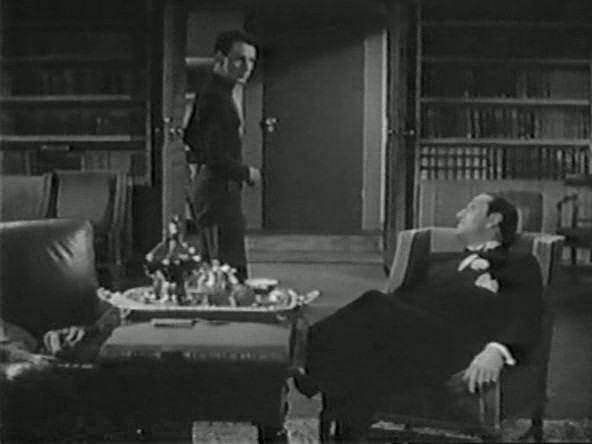
Image depicting Martin Kosleck in “The Mad Doctor”, expressing jealousy and betrayal, his posture and expression highlighting the romantic undertones of his relationship with Rathbone’s character, after Rathbone’s affections shift.
“We’re out of tune, Maurice, you and I,” Sebastian declares, as Maurice storms off to their shared bedroom in a huff.
In an era of strict censorship and societal repression, how many films dared to address male homosexual relationships with such honesty, even if coded? While these characters are far from heroic, they are presented as complex, human individuals. Maurice’s jealousy at Sebastian’s developing affection for a woman is portrayed as a natural and understandable reaction. The film grants both men a degree of empathy, despite their murderous actions, and their glimpses of domestic life together even possess a certain warmth. Rathbone and Kosleck share undeniable chemistry, so much so that Rathbone’s scenes with Ellen Drew pale somewhat in comparison. It’s this surprisingly frank and understanding portrayal of homosexuality that elevates The Mad Doctor beyond its B-movie trappings and makes it truly remarkable.
Accounts from Kosleck and others suggest that this very aspect of the film – the homosexual undertones – was what he and Rathbone were most determined to defend against censorship. If true, they deserve immense credit. Taking such a stance would have been courageous for any actor at the time, but considering Kosleck was openly gay in his private life, publicly engaging with these themes was even riskier.
Rathbone’s performance as the “mad doctor” is nothing short of extraordinary, deserving the “stunning” epithet bestowed upon it by some critics. He crafts a convincingly plausible psychopath – charming and intelligent on the surface, yet emotionally detached and fundamentally lacking in empathy. He deludes himself into believing he can find redemption, but when he realizes his path to redemption involves further violence, he remains blind to the inherent irony.
When Maurice, arguably the only person who truly understands him, brands him a monster “born in the dark of the moon, with no breath of God in your soul,” Sebastian is genuinely taken aback.
“That’s not true any more,” he protests, “it’s not true; her love is breathing the breath of God into my soul.”
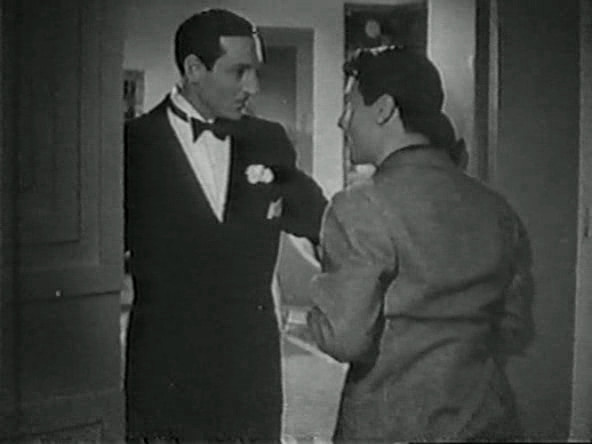
Image from “The Mad Doctor” showing Basil Rathbone’s character in denial and self-deception, desperately clinging to a false sense of redemption, highlighting the tragic flaw at the core of his psychopathic persona.
His desperate need to believe in his own redemption is palpable, yet so is the self-deception that underpins it. Maurice is right. And Rathbone masterfully conveys this internal conflict, showcasing the character’s monstrosity while simultaneously hinting at a tragic dimension. It’s a truly great performance. But, as is often the case, fate conspired against recognition. Rathbone’s brilliant work, along with the film itself, largely went unappreciated upon release.
In Conclusion…
THE MAD DOCTOR is undeniably strange, flawed in numerous ways, yet undeniably fascinating. Had they excised the unnecessary romantic subplot with Howard, perhaps reimagining him as a brother figure, and significantly trimmed the drawn-out, farcical taxi chase and library search, the film would have instantly improved. Adding just fifteen or twenty minutes to the runtime, dedicating more screen time to Rathbone and Kosleck, and allowing the relationship between Rathbone and Drew to develop more organically, could have elevated this film to something truly impressive. Instead, we are left with a situation all too familiar to fans of such cinematic oddities – a film that teases greatness, only to ultimately fall short. However, Rathbone’s scenes, particularly those with Kosleck, remain as sparkling gems amidst the surrounding cinematic dross; poignant reminders of what The Mad Doctor could have been.
